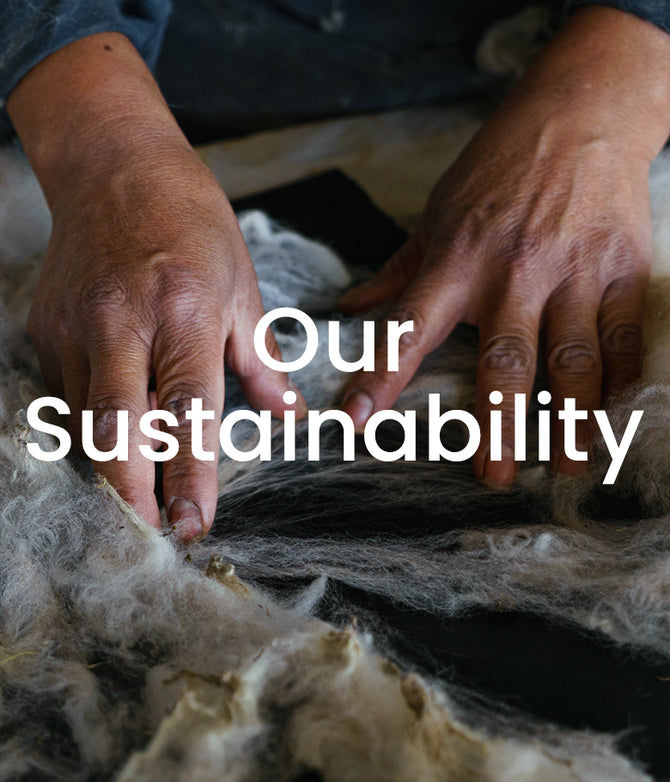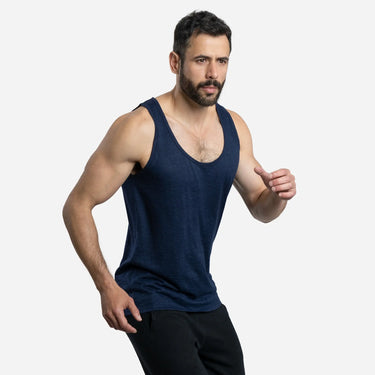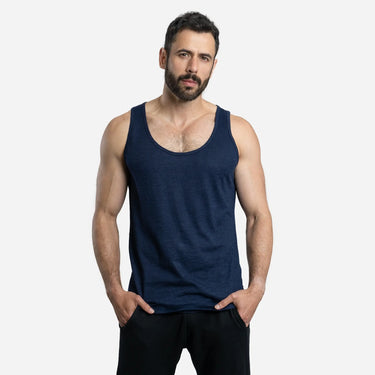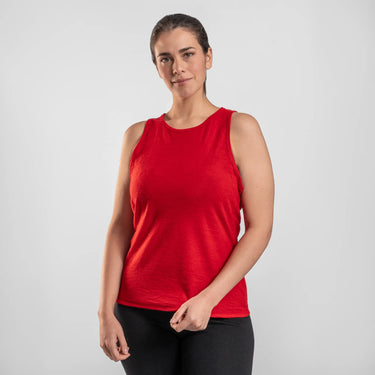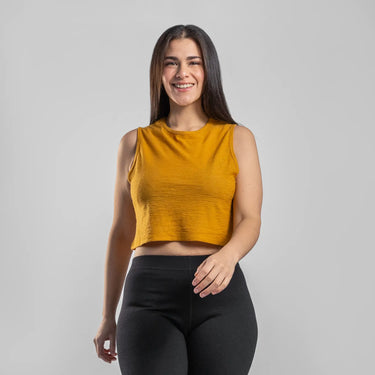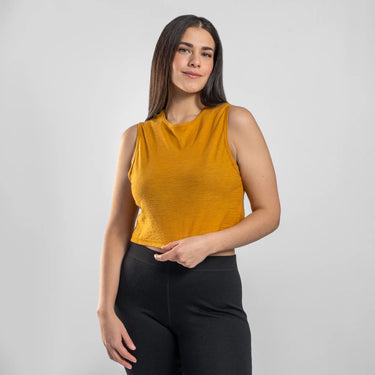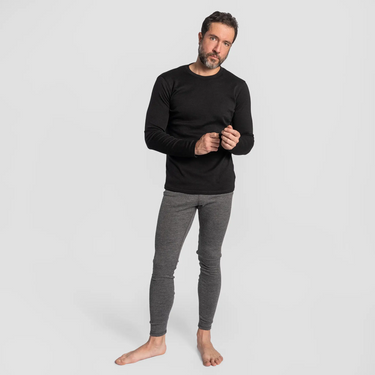Winter Camping
What to Sleep in for Cold Weather
Published Feb 25, 2025
1. Say Goodbye to Single-Use Plastics
Single-use plastics are a huge environmental problem, but small tweaks in your daily habits can make a big difference:
- Bring reusable bags: Make or buy groceries and produce bags to use instead of plastic ones. Keep them by the door or in your car so you never forget them.
- Ditch bottled water: Invest in a reusable water bottle [1]. If tap water isn’t safe, boil or filter it instead.
- Carry a reusable coffee cup: Even “eco-friendly” disposable cups create waste if not disposed of properly.
- Pack a zero-waste kit: Include bamboo or metal cutlery, a reusable straw, and a container for takeout. It might take practice, but soon it’ll feel natural.
2. Use Less Water and Energy
Every drop counts, and every watt matters. Here are a few small changes to reduce your footprint:
- Shorten your showers: A quick shower saves both water and energy. Bonus: it’s better for your skin too! [2]
- Turn off the lights: Unplug appliances and switch off lights when you’re not using them [3].
- Hang clothes to dry: Whenever possible, skip the dryer and hang your clothes. It’s gentler on fabrics and the planet.
- Flush smarter: If your toilet has an eco-flush option, use it. No eco-flush? Place a filled bottle in the tank to reduce water per flush.
At Arms of Andes we make our gear from 100% Royal Alpaca Wool of 18-18.5 microns.
3. Make Eco-Conscious Food Choices
Food is one of the easiest ways to live more sustainably:
- Buy local and seasonal: This reduces transportation emissions and supports local farmers [4].
- Cook from scratch: Homemade meals usually come with less packaging and waste.
- Be mindful about meat: Choose ethically raised options, like free-range chicken or grass-fed beef, and support sustainable farming practices. Exploring plant-based meals occasionally can also make a difference [5].
- Opt for sustainable groceries: Shop at packaging-free or bulk stores. No access? Buy in bulk at your regular store to minimize waste.
4. Rethink Your Transportation Habits
How you get around affects your carbon footprint. Start small:
- Walk or bike more: Even once a week can make a difference.
- Use public transport: Replace car trips with bus or train rides when possible [9].
- Carpool: Sharing rides with colleagues or friends reduces emissions.
- Fly less: For shorter trips, consider buses or trains. Offset your carbon emissions for long flights.
5. Choose Sustainable Fashion
The fashion industry is one of the largest polluters, but your wardrobe can make a difference:
- Avoid fast fashion: Look for quality over quantity. Cheaper often means corners were cut in ethics and sustainability.
- Buy second hand: Thrift stores and online resale platforms are great for finding unique, affordable items.
- Support eco-conscious brands: Do your research and choose brands that prioritize sustainability, like Arms of Andes, which uses 100% alpaca wool and natural dyes [6].
- Host clothing swaps: A fun way to give new life to unused items in your closet [7].

6. Upgrade Your Hygiene and Cleaning Habits
Small changes to your personal care and cleaning routines can have a big impact:
- Switch to bamboo* toothbrushes: Look for ones with compostable bristles and packaging.
- Choose steel razors: A durable, waste-free alternative to disposable razors.
- Use natural options: Biodegradable shampoos, soaps, and detergents are better for the planet.
- Use menstrual cups and fabric sanitary towels: They take a little getting used to, but you won’t go back when you do!
- Clean with vinegar and baking soda: These simple ingredients work wonders around the house and are free of harmful chemicals [8].
* When choosing products made from bamboo, try to ensure the bamboo comes from sustainable sources.
7. Embrace Nature and DIY Solutions
Spending time outdoors and trying DIY solutions are both fun and sustainable:
- Grow your own vegetables: Even a small herb garden on a windowsill can make a difference.
- Start composting: Turn food scraps into nutrient-rich compost for your garden. No garden? Check if your city collects food waste.
- Connect with nature: Spending time outside reduces stress and reminds us why protecting the planet matters.
- Join community initiatives: Participate in clean-ups or tree-planting events.
8. Be Mindful About Waste
Rethinking how you handle waste is key to sustainable living:
- Reuse before you recycle: Find new uses for things before throwing them away.
- Donate or swap: Let someone else enjoy what you no longer need.
- Avoid expedited shipping: One-day deliveries often mean more vehicles on the road, increasing emissions.
Sustainable living starts with REDUCING waste, REPAIRING and/or REUSING broken/unused items, before RECYCLING or, when possible, COMPOSTING them.
Why Small Steps Matter
You might think, “Will my tiny changes really help?” The answer is yes. If everyone made just one or two of these adjustments, the collective impact would be enormous. And remember, you don’t have to do everything at once. Pick a couple of these tips to start with, and add more as you go. Before you know it, living sustainably will feel like second nature.
So, are you ready to make 2024 your most sustainable year yet? Small steps today can lead to a greener tomorrow. Let’s get started—one habit at a time!

At Arms of Andes we make our gear from 100% Royal Alpaca Wool of 18-18.5 microns.
Reading time: 4 minutes
By Lesia Tello & Jordy Munarriz
Winter camping is an unforgettable experience—stunning landscapes, crisp air, and the deep stillness of a snow-covered forest. But without the right gear, those dreamy nights can turn into a battle against the cold. If you've ever woken up shivering in your tent at 3 AM, you know how crucial it is to prepare properly. Whether you're a seasoned winter camper or heading out for your first cold-weather adventure, here’s everything you need to know about staying warm while you sleep [1].
Choosing the Right Sleeping System for Winter Camping
Your sleeping system is your first line of defense against freezing temperatures. This includes your tent, sleeping bag, and sleeping pad—each playing a vital role in retaining heat and keeping you comfortable throughout the night.
1. Picking the Right Tent for Cold Weather
Not all tents are built for winter conditions. Choosing the right one can make or break your trip.
- Three-Season Tents: Suitable for mild winter camping when paired with the right sleeping bag and insulation layers. These tents offer good ventilation, preventing condensation buildup.
- Four-Season Tents: Designed to withstand heavy snow and strong winds, these tents provide better insulation and stability in extreme cold.
- Double-Wall vs. Single-Wall Tents: Double-wall tents have a breathable inner layer and a waterproof outer layer, reducing condensation. Single-wall tents are lighter but can trap moisture inside [2,3].
If you expect harsh winter conditions, a four-season tent with a full-coverage rainfly and reinforced poles will provide insulation and stability against heavy snow and strong winds. However, for extreme environments—such as high-altitude expeditions or Arctic camping—an expedition tent is the safest choice, as it is designed to endure severe storms, subzero temperatures, and prolonged exposure to the elements [2].

Picture by Tyler Lillico.
2. Choosing the Best Sleeping Bag for Winter Camping
Your sleeping bag is your primary source of insulation, trapping body heat while keeping out the cold [1].
- Temperature Rating: Look for a comfort rating that matches or is slightly lower than the expected nighttime temperature [3].
- Down vs. Synthetic Insulation:
- Down: Warmer, lighter, and highly compressible, but loses insulation when wet [1,3].
- Synthetic: Retains warmth even when damp, dries faster, and is more affordable [1,2].
- Mummy vs. Rectangular Shape: Mummy bags contour to your body, minimizing empty space where cold air can settle. Rectangular bags offer more space but are less thermally efficient [3].
Pro Tip: A sleeping bag liner can add extra warmth and help keep your bag cleaner for longer.


6. Upgrade Your Hygiene and Cleaning Habits
Small changes to your personal care and cleaning routines can have a big impact:
- Switch to bamboo* toothbrushes: Look for ones with compostable bristles and packaging.
- Choose steel razors: A durable, waste-free alternative to disposable razors.
- Use natural options: Biodegradable shampoos, soaps, and detergents are better for the planet.
- Use menstrual cups and fabric sanitary towels: They take a little getting used to, but you won’t go back when you do!
- Clean with vinegar and baking soda: These simple ingredients work wonders around the house and are free of harmful chemicals [8].
* When choosing products made from bamboo, try to ensure the bamboo comes from sustainable sources.
7. Embrace Nature and DIY Solutions
Spending time outdoors and trying DIY solutions are both fun and sustainable:
- Grow your own vegetables: Even a small herb garden on a windowsill can make a difference.
- Start composting: Turn food scraps into nutrient-rich compost for your garden. No garden? Check if your city collects food waste.
- Connect with nature: Spending time outside reduces stress and reminds us why protecting the planet matters.
- Join community initiatives: Participate in clean-ups or tree-planting events.
At Arms of Andes we make our gear from 100% Royal Alpaca Wool of 18-18.5 microns.
3. The Role of a Sleeping Pad in Winter Camping
A sleeping pad is not just for comfort—it’s a crucial part of your insulation system, preventing heat loss to the frozen ground [1].
- Closed-Cell Foam Pads: Lightweight, durable, and provide solid insulation.
- Self-Inflating Pads: Offer a balance between warmth, comfort, and packability.
- Air Pads with Insulation: More comfortable but require additional insulation in extreme cold.
Check the R-value: A sleeping pad’s R-value measures its insulation against the cold ground, ranging from 0 to 6—the higher, the warmer. For winter camping, aim for an R-value of 4 or higher to retain body heat. In extreme cold, layering a closed-cell foam pad under an inflatable one adds extra insulation.
How to Stay Warm While Sleeping Outdoors
Beyond your gear, there are several tricks to ensure you stay warm through the night.
1. Layer Up Wisely
Wearing the right layers can make a massive difference:
- Base Layer: Moisture-wicking wool [1,4] or synthetic fabric to keep sweat off your skin [5].
- Mid Layer: Insulating layer like fleece or down.
- Outer Layer: Windproof and waterproof shell to block out snow and moisture.
Avoid cotton, as it retains moisture and draws heat away from your body [1,5].
2. Keep Your Head and Extremities Warm
Your body loses heat fastest through exposed areas. A beanie or insulated hood keeps warmth from escaping, while thick socks and light gloves help maintain circulation in your hands and feet [3].
3. Pre-Warm Your Sleeping Bag
Jumping into an ice-cold sleeping bag is never pleasant. Try these techniques to warm it up before bed:
- Use a Hot Water Bottle: Fill a bottle with hot water and place it in your bag before sleeping.
- Layer Extra Clothes Inside: Stuff your dry clothes at the bottom to keep them warm for the morning.
- Do Light Exercise Before Sleeping: A few jumping jacks or push-ups generate body heat that gets trapped inside your bag [1].
4. Eat High-Calorie Foods Before Bed
Your body burns energy to stay warm. Eating high-fat and high-protein snacks before sleeping—like nuts, cheese, or chocolate—gives your metabolism a steady fuel source for heat production.
5. Manage Moisture and Condensation
Moisture is your worst enemy in winter camping. Here’s how to stay dry:
At Arms of Andes we make our gear from 100% Royal Alpaca Wool of 18-18.5 microns.
Lightweight

For snowboarders, skiers, and winter hikers, weight matters. Every gram counts when you're climbing, carrying gear, or navigating the slopes. Alpaca wool’s unique insulation properties allow for lightweight warmth, meaning you stay protected without unnecessary bulk.
Five Reasons to Choose Alpaca Wool for Snow Sports
Alpaca wool is the ultimate base and mid layer material for tackling the demands of skiing and snowboarding. Its unique properties make it an exceptional choice for base and mid layers, ensuring comfort and performance on the slopes.
1. Exceptional Warmth
Alpaca wool fibers feature semi-hollow cores, providing incredible insulation. Combined with their natural crimp (waviness), these fibers trap heat efficiently,
2. Breathable and Moisture-Wicking
One of alpaca wool’s standout qualities is its ability to wick moisture away from your skin while remaining highly breathable. This means you stay dry and comfortable, even during intense physical activity. Alpaca wool base layers, such as leggings and shirts, excel in keeping you warm and sweat-free.
3. Temperature Regulation
Alpaca wool’s unique ability to balance warmth and breathability helps regulate your body temperature. Whether you're racing downhill or waiting for the ski lift, alpaca wool keeps you warm in the cold and prevents overheating during activity.
4. Lightweight and Flexible
Thanks to its excellent insulating properties, alpaca wool keeps you warm without adding bulk. This lightweight quality ensures freedom of movement—crucial for maintaining balance and agility on the slopes.
At Arms of Andes we make our gear from 100% Royal Alpaca Wool of 18-18.5 microns.
Men's Alpaca Wool Jacket
420 Midweight Full-Zip

Relatedcontent
Bamboo:
A fast-growing plant often used for making sustainable products like toothbrushes and cutlery.
Biodegradable:
Materials that can break down naturally without harming the environment.
Bulk stores:
Shops where you can buy products in large quantities, often with minimal packaging.
Carbon footprint:
The total amount of greenhouse gases produced directly or indirectly by human activities.
Composting:
A process where organic waste decomposes into nutrient-rich material for gardening.
Ethically raised:
Livestock or poultry that is raised in humane and environmentally responsible ways.
Fast fashion:
Cheap, mass-produced clothing often linked to environmental and ethical issues.
Natural dyes:
Coloring substances derived from plants, animals, or minerals, used to color fabrics sustainably.

Picture by Kezadri Abdelhak.
Final Tips for a Warm Night in the Wild
- Stay Dry: Change into dry clothes before sleeping.
- Double Up on Sleeping Pads: A foam pad under an insulated air pad boosts warmth.
- Share Body Heat: If camping with a partner, zip-together sleeping bags can help retain warmth.
Winter camping is a test of preparation, but with the right sleeping system and a few smart strategies, you’ll wake up refreshed instead of frozen. Whether you’re deep in the mountains or nestled in a snowy forest, staying warm means staying safe and enjoying the adventure.
Ready to take on the cold? Gear up, step outside, and experience winter like never before!

Picture by Joshua Earle
.

Glossarykeywords
Base Layer:
The first layer of clothing designed to wick moisture away from the skin to keep the body dry and warm.
Double-Wall Tent:
A tent with both an inner breathable layer and an outer waterproof layer, reducing condensation buildup.
Down Insulation:
A natural insulating material made from bird feathers, known for being lightweight and highly compressible but losing warmth when wet.
Expedition Tent:
A specialized, highly durable tent designed for extreme cold environments, such as high-altitude or Arctic expeditions.
Four-Season Tent:
A tent built for winter conditions, providing extra insulation and resistance to snow and strong winds.
R-Value:
A measure of a sleeping pad’s thermal resistance, indicating how well it insulates against the cold ground.
Self-Inflating Pad:
A sleeping pad that expands when the valve is opened, offering a balance of comfort, insulation, and portability.
Three-Season Tent:
A tent suitable for spring, summer, and fall, offering good ventilation but requiring extra insulation for cold-weather camping.
Vapor Barrier Liner (VBL):
A liner used inside a sleeping bag to prevent body moisture from reaching the insulation, reducing heat loss.
At Arms of Andes we use the finest Royal Alpaca Wool sourced in the Peruvian Andes. The Andean alpacas naturally developed over thousands of years in harsh conditions in high altitudes, creating the perfect fiber for outdoor gear that helps you stay protected in all conditions. Discover our outdoor apparel.

In the textile industry, companies that produce garments made entirely from Merino wool typically use fibers that are 17.5 microns or finer to minimize any itchiness or roughness, [4] ensuring comfort for their customers. A study conducted by the Division of Dermatology at the University of Louisville in 2019 evaluated the effects of wearing these garments on individuals with skin sensitivities, such as atopic dermatitis or eczema. In the study, 25 participants wore only Merino wool garments of 17.5 microns for six weeks and cotton garments of 21 microns for six weeks more, while another group of 25 followed the reverse order. Participants reported significant changes when switching from cotton to Merino wool, with those who started in Merino wool experiencing a decrease in their eczema during the first weeks. [4]
| Properties | Royal Alpaca Wool | Cashmere | Merino Wool |
|---|---|---|---|
| Weight | Lightest | Light | Heavier |
| Fiber Structure | Semi-Hollow | Solid | Solid |
| Thermal Capacity | 5 x Warmer | 3 x Warmer | Warm |
| Water Retention | Absorbs 10% of weight | Shrinks in water | Absorbs 10%
of weight |
| UV Protection | Yes | Yes | Yes |
| Fiber Scales | Smoothest | Softest | Prickly |
| Microns (average) | 17.5 | 14 | 18 |
| Tensile Strength | Highest | Weak | High |
| Odor Resistance | Yes | Yes | Yes |
| Wrinkle Resistance | Yes | Yes | Yes |
| Hypoallergenic (Lanolin free) | Yes | Yes | No |
The Final Verdict: And the Winner Is...
After a comprehensive analysis of alpaca, merino, and cashmere, it's clear that cashmere, while undeniably luxurious, lacks the durability required for outdoor garments. However, it excels as a high-end fiber for special occasions and elegant attire.
In the head-to-head battle between alpaca and merino, alpaca emerges as the undisputed champion! Alpaca wool surpasses merino in warmth, lightness, softness, and strength. It's the ultimate choice for those seeking performance, comfort, and sustainability.
Authors & Researchers

Lesia tello
Biologist and hiking enthusiast with a deep admiration for nature and the intricate mechanisms of life. With a background in biochemistry and a master’s degree in education, she blends science with adventure, exploring how we interact with the natural world and sharing insights on outdoor experiences.

Jordy Munarriz
Environmental Engineer with a master’s degree in renewable energy and a specialization in sustainability. A passionate traveler and advocate for responsible tourism, he captures the essence of exploration through storytelling, inspiring others to connect with nature in a conscious and meaningful way.
Authors & Researchers

Lesia tello
Biologist and hiking enthusiast with a deep admiration for nature and the intricate mechanisms of life. With a background in biochemistry and a master’s degree in education, she blends science with adventure, exploring how we interact with the natural world and sharing insights on outdoor experiences.

Jordy Munarriz
Environmental Engineer with a master’s degree in renewable energy and a specialization in sustainability. A passionate traveler and advocate for responsible tourism, he captures the essence of exploration through storytelling, inspiring others to connect with nature in a conscious and meaningful way.
Alpaca wool (particularly the royal and baby alpaca fiber grades) is non-itchy, warm, and performs better than merino and other types of sheep's wool. This makes alpaca wool perfect for your outdoor clothing, slipper socks, and even underwear.

Glossarykeywords
Double-Wall Tent:
A tent with both an inner breathable layer and an outer waterproof layer, reducing condensation buildup.
Down Insulation:
A natural insulating material made from bird feathers, known for being lightweight and highly compressible but losing warmth when wet.
Expedition Tent:
A specialized, highly durable tent designed for extreme cold environments, such as high-altitude or Arctic expeditions.
Four-Season Tent:
A tent built for winter conditions, providing extra insulation and resistance to snow and strong winds.
R-Value:
A measure of a sleeping pad’s thermal resistance, indicating how well it insulates against the cold ground.
Three-Season Tent:
A tent suitable for spring, summer, and fall, offering good ventilation but requiring extra insulation for cold-weather camping.
Vapor Barrier Liner (VBL):
A liner used inside a sleeping bag to prevent body moisture from reaching the insulation, reducing heat loss.
References:
[1] Princeton University Outdoor Action Program. (n.d.). Outdoor action guide to winter camping. Retrieved from https://www.princeton.edu/~oa/winter/wintcamp.shtml
[2] Backpacking Light. (2023). By the numbers: How does tent design and materials influence cold-weather camping comfort? Retrieved from https://backpackinglight.com/by-the-numbers-tent-design-materials-influence-cold-weather-camping-comfort-seeber/
[3] REI Co-op. (2023). How to stay warm while winter camping. Retrieved from https://www.rei.com/learn/expert-advice/winter-camping.html
[4] Li, Y., Holcombe, B. V., & Apcar, F. (1992). Moisture buffering behavior of hygroscopic fabric during wear. Textile research journal, 62(11), 619-627
[5] DenHartog, E. (2023). The science of staying warm in winter. PBS North Carolina. Retrieved from https://www.pbsnc.org/blogs/science/the-science-of-staying-warm-in-winter/










